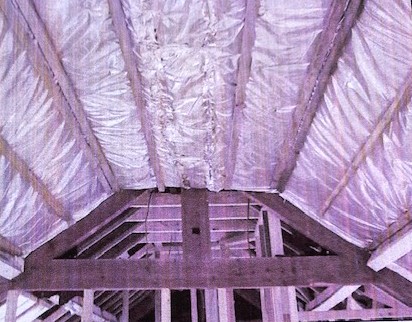
New satellite will monitor methane leaks from space
A new satellite is due to be launched this month to monitor methane levels around the world from space.
It will orbit 300 miles above the Earth, 15 times per day, and will collect data about this gas which is believed by scientists to be a major contributor to global warming and is a much more potent greenhouse gas than carbon dioxide.
A lot of methane is produced by farming and waste disposal, but the project will focus on methane emissions at oil and gas plants where it is regularly burnt.
Firms extracting oil and gas often burn methane or let it escape into the atmosphere.
“This satellite is a very imaginative and timely move,” said Midlands energy expert Ron Fox, “particularly after the recent news about one of the worst methane leaks ever recorded took place last year at a remote well in Kazakhstan.”
It is estimated that 127,000 tonnes of the gas escaped when a blowout started a fire that raged for over six months. The leak is comparable to that of driving more than 717,000 petrol cars for a year, according to the US Environmental Protection Agency’s Greenhouse Gas Equivalency Calculator.
However, Buzachi Neft, the company that owns the well, denies a “substantial amount” of methane was leaked.
The latest satellite is a collaboration between Google and the Environmental Defence Fund, a United States-based non-profit global climate advocacy group.
The data from the satellite will be processed by the tech giant’s artificial intelligence tools and used to generate a methane map aimed at identifying leaks worldwide.
But the group said if it identified a significant leak, it would not specifically notify the company responsible for it, but instead make the information available for governments and regulators to take action.
Ron pointed out at the moment there were no international rules on controlling methane emissions.
However, the EU has agreed a set of proposals which includes forcing oil and gas operators to repair leaks and banning the coal sector from setting fire to gases in member states from 2025.
In 2017, the European Space Agency launched a similar satellite called Tropomi, which charts the presence of trace gases in the atmosphere, including methane.
It was a mission with a minimum seven-year life span, which means it could end this year.
Despite various tracking efforts, methane levels remain concerningly high.
Nasa says levels of the gas have more than doubled in the last 200 years, and that 60 per cent of it is created by human activity.
A major contributor to that percentage is livestock, specifically cows. Because of the way they digest their food, cow burps contain methane.
In 2020 a report by the US Environmental Protection Agency said that said a single cow could produce 154-264 pounds of methane gas every year. It added that there were believed to be about 1.5 billion cows raised for their meat worldwide.
“Satellites are great for finding the big industrial culprits of methane emissions, said Ron, of Noreus Ltd, which is based at Keele University’s Science and Innovation Park.
“But detecting other methane sources, such as those from agriculture, is much more difficult,” he added.
For advice on cutting back on carbon dioxide and methane gas emissions contact Ron Fox, on 01782 756995.
Caption: Out of this world – a new satellite is due to be launched later this month to monitor methane levels on earth from space. Picture: Wikipedia




